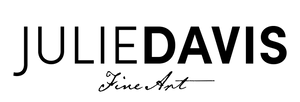Discovery
Case Study | MFA Graduate Thesis Project
Academy of Art University Graduate School of Web Design & New Media
Week 3
Solve the Problem with Design
After careful review of all of my ideas and inspirations and with the help of the critiques I received from my professor and peers, I was able to narrow my best ideas down.
Here are the three ideas that I think will make a great starting point for my project:
- Quantum Mechanics
- Collective Consciousness
- Human Awareness, Potential & Free Will
Within each of these topics, I would like to create an art installation, an augmented reality component, and a call to action social media application component.
Human-centered design is an approach to problem solving by human involvement through all steps of the creative process.
Human Centered Design
Human-centered design revolves around three phases:
- Inspiration: In this phase, you must keep in mind the people for whom you are designing.
- Ideation: In this phase, you will create a prototype and test it.
- Implementation: This is the final phase where you get your idea out to the world.
Human-centered design requires one to immerse themselves in the problem and community in which they want to find a solution.
The community ultimately determines the success of the solution by employing it.
Functionality
It is important to know that functionality doesn't strictly mean utility.
The design portion of my Project should be more than the "skin"—the colors of the interface and the size of the buttons and sliders. The design and art should be the experience. This means that I don't need to simply automate user tasks or provide utility to create a piece of interactive technology.
Here are many categories of projects:
- Narrative
- Artistic
- Game-like
- Technology (the Internet of things)
- Data driven
- Campaign
- Design for good
- Utility
I will do some research and extrapolate and postulate how design might be used in the future. I will think not just in the long term as far as content, but also process. I will live with my Project for many months, and maybe even years. So, I will make sure that my Project is not too safe, or conversely, that it isn't dated before it's produced.
Cost and Benefit Analysis
Each one of these topics would make a great addition to my portfolio since they are multi-faceted. They all have technical and execution requirements to consider.
Technical and Execution Requirements:
- Augmented Reality
- learn technology (or)
- Employ a team to create this component
- Social Engagement Engineering
- Painting & Design Skills - Artwork
- Installation Design
- Installation Production & Planning
- Operations & Management
Similarly, they all offer a lot to explore and discover. So, my conclusion is that I need to decide which topic has the most interest for me.
Find Your Calling
Discovering my chosen path is not an easy task. There are many experts that have gone before me who have created tools to help. Jeff Goins is a writer who has some great tips on how to find your calling.
He says that,"Finding your calling usually isn't a defining moment of clarity. It's a hard, long process to discover what you were meant to do with your life that usually involves failure."
Links to Jeff Goins's podcast:
- https://itunes.apple.com/us/podcast/seven-stages-finding-your/id844091351?i=1000337894187&mt=2
- http://goinswriter.com/seven-stages/
In his podcast, he breaks down how to find your calling in the following seven stages:
- Awareness
- Apprenticeship
- Practice
- Discovery
- Profession
- Mastery
- Legacy
Coming-Up Next...
Next week, I will be learning about design and UX research:
- Construct one project from the three-project concept
- Proposal Abstract
- Inspirational projects
- Rationale
- Unique positioning statement
- Competition
This blog will serve as a place to create my case study. I invite you to follow along with me as I journey through this process.
Thank you for reading and for your interest.
Julie A. Davis Veach

